#dorudon
Explore tagged Tumblr posts
Text




























D is for...?
All of the D names in my Paleo Party! Are there any I'm missing?
Stickers || Phone Wallpapers Masterlist
#art#my art#paleoart#paleontology#science#illustration#dinosaur#ediacaran#paleozoic#mesozoic#cenozoic#dodo#dire wolf#dorudon#deinocheirus#deinotherium#deinonychus#dineobellator#dromaeosaurus#dilophosaurus#dunkleosteus#dakosaurus#deinosuchus
187 notes
·
View notes
Text
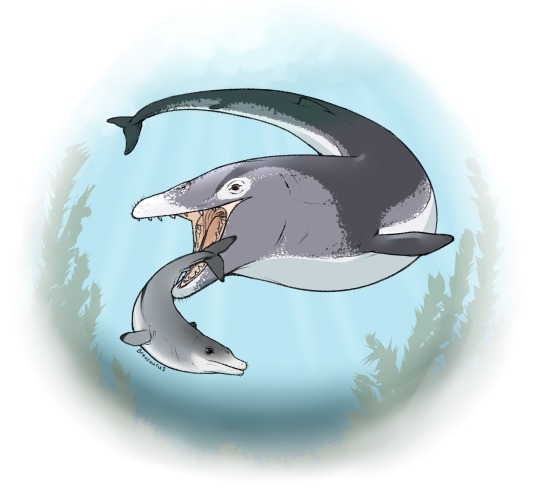
Basilosaurus in pursuit of an unlucky young Dorudon. Drawn for day 12 of a #dinocember challenge on X.
77 notes
·
View notes
Text


#my art#doodle#kemono friends#ok tags thatll mess up anyone searching in paleo tags:#dorudon#basilosaurus isis#kemofure
56 notes
·
View notes
Text
DAY 11 - DORUDON

Dorudon atrox, an orca sized whale from the Eocene, is tossed into the air by its much larger relative, Basilosaurus, somewhere in the Tethys sea (41.03-33.9 Mya)
#marchmammals#paleoart#paleontology#animal art#animals#mammals#mammal#animal#whale#whales#whale evolution#cetacean#cetaceans#dorudon#basilosauridae#basilosaurus
24 notes
·
View notes
Text

11/03/2025 Dorudon
20 notes
·
View notes
Text
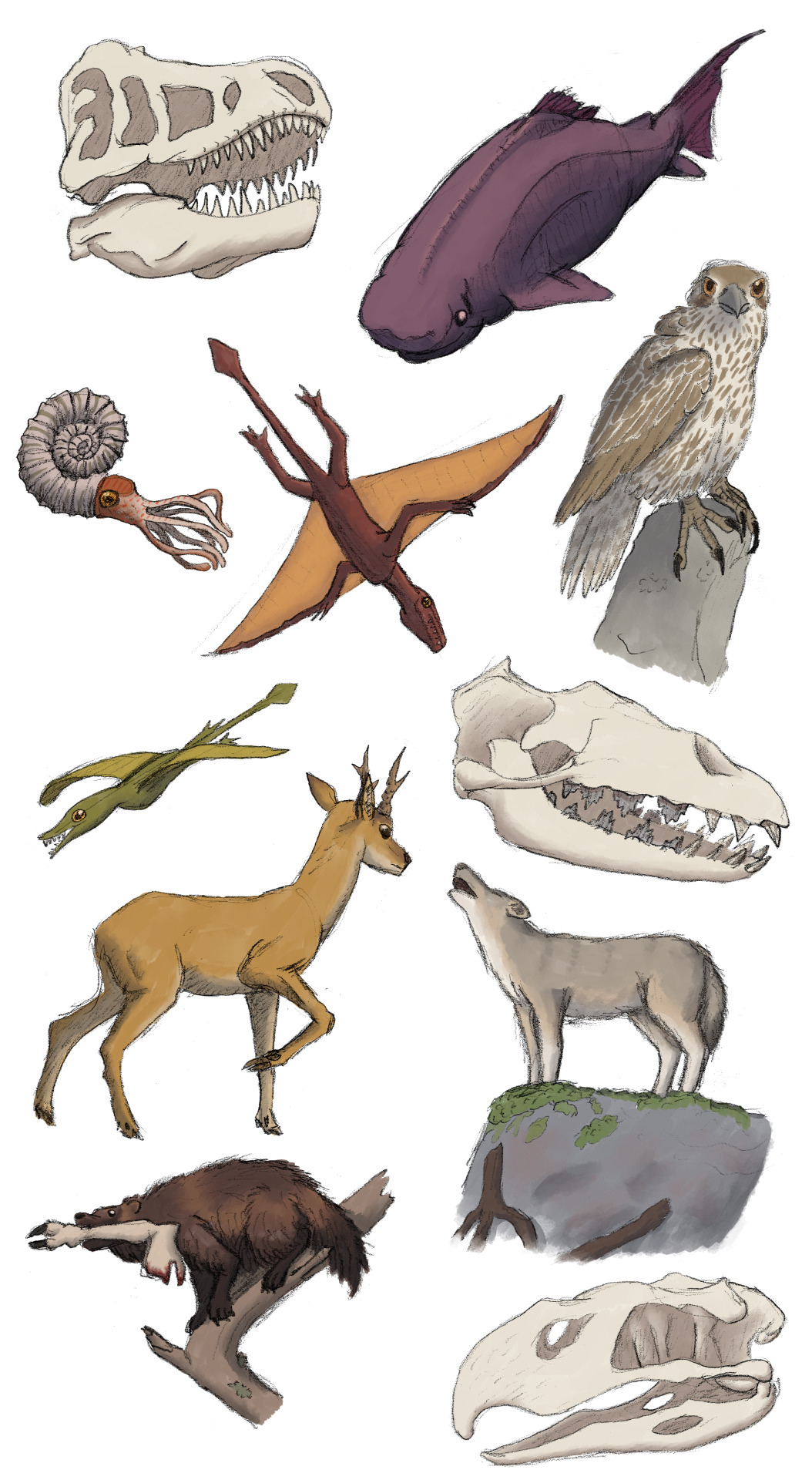
Museum Drawings VII: probably the final one in a long while, as available time for aimlessly doodling in museums is getting low.
#tyrannosaurus rex#fish#ammonite#pterosaur#gyrfalcon#dorudon#roe deer#wolf#wolverine#elephant bird#paleoart#art
21 notes
·
View notes
Text
Well, break for me is over.
Time for the monthly drawing recap!
In this month:
- a pod of Dorudon begin their descent for food as Hilda ascends back to the surface
- freediving to relax in the morning, the bellkeeper stumbles upon a Marambionectes hunting sand lance past the night hours
- Hilda gives Frida and David, who tagged along, some tips on how to draw Stegosaurus





#drawing#dinosaur#hilda netflix#hilda fanart#hilda hilda#bellkeeper hilda#frida hilda#david hilda#dorudon#Marambionectes#stegosaurus
18 notes
·
View notes
Text

A fossilized tooth of an indeterminate basilosaurid, possibly Basilosaurus isis from the Samlat Formation in Dakhla, Morocco. It is unclear if the larger teeth from these ancient whales can be attributed to Basilosaurus.
#synapsid#mammal#fossils#paleontology#palaeontology#paleo#palaeo#basilosaurus#dorudon#cetacean#whale#eocene#cenozoic#prehistoric#science#paleoblr#fossil friday#fossilfriday#バシロサウルス#ドルドン#クジラ#化石#古生物学
114 notes
·
View notes
Text

Dorudon, an early species of whale.
55 notes
·
View notes
Text
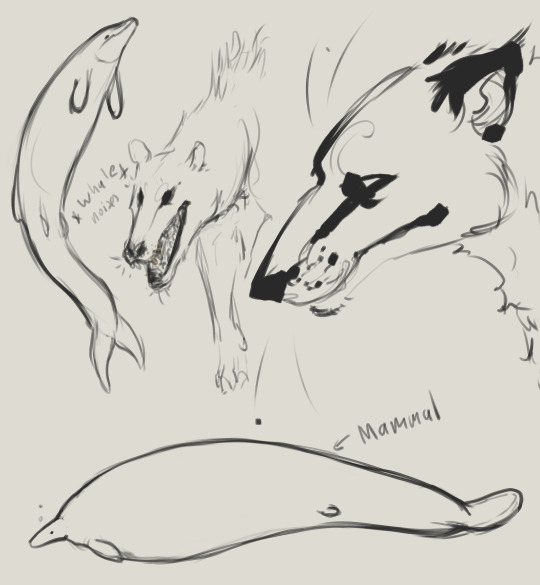
Was messing a bit with my sketch pens and ended up doodling some ancient whales.
Except that big one in the top right, I don’t know what it is but it kinda reminds me of a thylacine🤷
#my art#not transformers#paleo art#perucetus#the fat fuck that was recently described#nature takes the weirdest animals away from us once again#dorudon#pakicetus
70 notes
·
View notes
Text
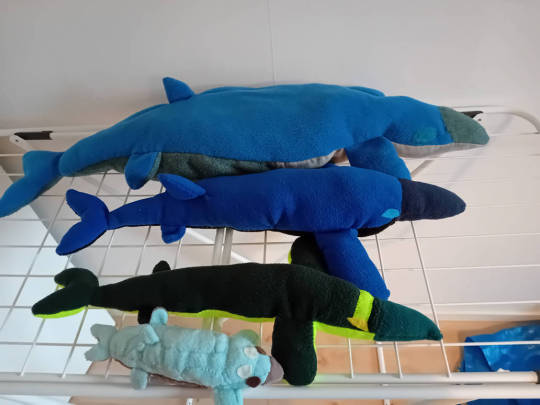
last picture before bed The Perucetus Colossus is done and she's the biggest of the bunch not only is she big but also very soft to hug. i wanted to make a plush of the newly discovered Perucetus Colossus. a member of the basilosaurus family and who was the biggest of them. and let me tell ya, this plush is soooo soft :3 i,am pleased with the end result.
3 notes
·
View notes
Text


Some prehistoric whale girls I did for Mermay.
29 notes
·
View notes
Text
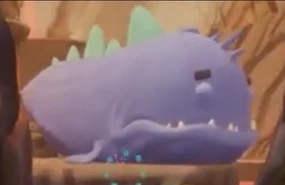
[ID: An image of Dorudon, a prehistoric whale character from the SpongeBob franchise, as he appears in The Cosmic Shake. End ID.]
Dorudon from The Cosmic Shake (2023)
5 notes
·
View notes
Text
Daeodon was such a strange animal. Literally a terrestrial, (probably) carnivorous hippopotamus. Never ceases to be my favorite thing this earth has grown.

Daeodon (heavily stylized), dorudon and hippopotamus
#daeodon#dorudon#hippopotamus#ungulate#prehistoric animals#prehistoric#extinct species#extinct animals#extant animals
3 notes
·
View notes
Photo
Look at these little old ancient babies and tell me they don't make you feel something.

Whale evolution by Rainbowleo
#indohyus#pakicetus#ambulocetus#kutchicetus#maiacetus#georgiacetus#protocetus#dorudon#whale evolution
22 notes
·
View notes
Text








LOOK AT THESE PAINTINGS BOY
[ID: six paintings of prehistoric life by simon stålenhag.
the first painting is a dimetrodon, a pelycosaur with a bright red sail on its back. the sail has bold black spots on it, and the animal’s squat body has black stripes. it stands on an upthrust rock above a field of boulders. behind those in the midground is a forest of coniferous trees, behind those, a plain with a river, and behind that, tall mountains fading into the distance. the scene looks to be set at either dawn or dusk, with orange sunlight shining on the rocks and distant mountains.
the second painting is a rainy scene. a lycaenops, a therapsid with a brown body and large saber teeth, stands on a slick platform of stone. leaves from vegetation growing in the cracks of the stone blow in the wind and rain falls at a slant. the animal has large yellow and black stripes on its face, a white throat, and black stripes on its back and tail. it stands in the lee of a cliff.
the third painting is a herd of hadrosaurs, large dinosaurs, seen grazing in a field. the viewer appears to be standing in a dark forest understory, looking out past the trees and undergrowth into the open and brightly lit field. the hadrosaurs are black with white stripes on the undersides of their necks and bellies, and a bright red lateral stripe.
the fourth painting is an eryops, an amphibian swimming in green water. its skin is textured and striped with yellow and black, and its eyes and nose stick above the surface of the water. beneath it long fronds of aquatic plants or algae wave in the current and fade into the murky water. above the water a thick swampy forest can be seen, casting shade and dappled sunlight.
the fifth painting is a shallow lagoon from above, with a group of rhamphorhynchus, small pterosaurs, flying in the sky. the water of the lagoon is bright and vividly cyan, and large formations of rock with trees clinging to the tops thrust up in a series of barrier islands. the rhamphorhynchus are colored similarly to modern gulls, gray with black and white stripes on the tips of their wings, and they also have striped flat rudders at the ends of their tails. in the distance, the sea deepens into darker blue.
the sixth painting is a pair of robertia, stocky therapsids with large eyes, small tusks, and beak-like mouths. they emerge from a burrow dug beneath a shrub into red sandy ground. the animals keep in the shade. a series of small ridges and dunes topped with vegetation and a few small trees stretch away from the viewer until they come up on a series of tall white cliffs in the very background.
the seventh painting is a trio of archaeopteryx, feathered bird-like dinosaurs. the one in the center has bright, somewhat iridescent blue plumage, and the two at the sides are brownish-red. their wings have small clawed fingers and they have toothed mouths. their eyes are alert. they stand along a thick mossy tree branch which stretches above the long limbs of a plant resembling a monkey-puzzle tree.
the eighth painting is a dorudon, a toothed whale. the entire image is tinged blue, underwater. the animal is countershaded with a dark gray back and a white underside, and it appears to be turning sharply in pursuit of a school of small fish, with its mouth open to catch them. sunlight streams through the surface of the water at the top of the painting.
End ID.]
#not 100% on my identifications of all those animals but its my best guess#its hard to find Any info on these paintings?? i’m certain of dimetrodon & rhamphorhynchus and i was able to find eryops#and the robertia i found that id on a tumblr post from a knowledgeable paleoartist so i trust that#didnt try to guess the hadrosaurs cause i just dont know where to start#anywayyy paleoart posting done i just really really really love these paintings#these are not even close to all of them btw there are 30 these are just some of my faves#mine
143 notes
·
View notes